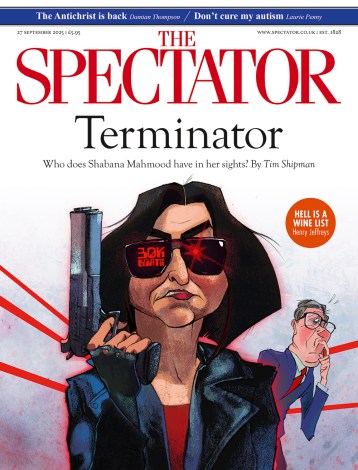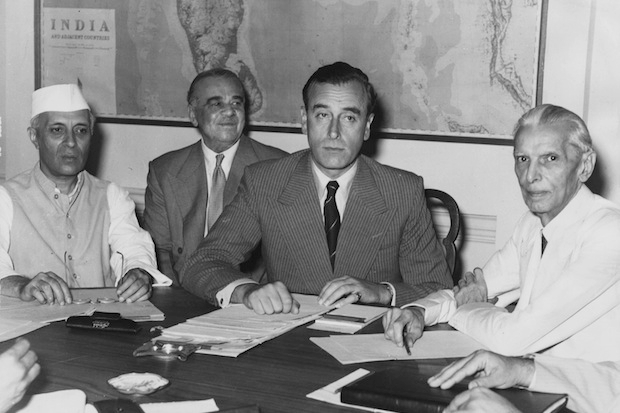John Keay’s excellent new book on the modern history of South Asia plunges the reader head first into some wildly swirling currents. Here are India, Pakistan, Bangladesh, not to mention Sri Lanka and Nepal, and a supporting cast of mini-states present and past that you may not even have heard of, all tumbling, overlapping, in a state of perpetual contradiction and collision, flowing like a tide of crazed tsunami debris down some great tropical floodplain. This is the world’s biggest population zone, and possibly even the world’s coming economic superpower, in full and violent flow.
Midnight’s Descendants is primarily about the partition of India, the moment in 1947 that initially created independent India and a new state called Pakistan. But Keay’s thesis is that partition did not end there. For the spirit of separation went on to drive the politics of all of the states south of the Himalayas, usually to disastrous effect, such that there is barely a corner of the subcontinent that does not harbour its own set of secessionist conspiracies and terrorisms or its own bloody history of revolt and suppression.
Where did this unresting spirit of communal strife come from? First one must look to history.
In the long view, the territory that is now India, Pakistan and Bangladesh was shaped by Muslim invaders who entered the sub-continent from the direction of Afghanistan and subjugated the mainly Buddhist and Hindu populations for seven centuries. Successive Muslim states brought technology, art and organisation, built fabulous citadels and tombs and mosques, only to collapse into the arms of hard-nosed managers from the world’s first multinational corporation, the East India Company. In short, a history that left an abiding sense of injustice on all sides. Keay’s book is the story of how those trapped grievances were released by partition.
Yet such a division was hardly new. The India that in 1947 the British were about to leave behind was already divided: Keay reminds us that ‘British’ India included around 600 semi-autonomous ‘princely’ states, accounting for almost half of the territory and a quarter of the population. Most were actually statelets, villages with ambitious titles, some with no more than a few hundred inhabitants. But others were enormous, and enormously wealthy: Jammu and Kashmir in the northeast was the size of France, and Hyderabad in the south had a population larger than Italy. The business of independence included the incorporation of these territories into India and Pakistan, by means of hurried diplomacy, political cunning and coercion. That was the job of India’s last viceroy, Earl Mountbatten, and at the time he was praised. Later he admitted, ‘I fucked it up.’
Whether it was possible not to do so is another question. At birth independent India and Pakistan comprised what sometimes seems an almost limitless variety of grudges and discontents, defined by language, religion, class, caste and wealth. Add to that surging expectations induced by independence, plus the trauma of partition, and the mix was explosive. It exploded not once but repeatedly.
Pakistan broke into two, creating Bangladesh amid invasions and massacres, and other attempts at secession followed. Revolts, confrontations and killings on an extraordinary scale fill virtually every page of this history, including the decades-long struggle over Kashmir, rioting and murder in Punjab and Assam and East Bengal, repeated uprisings in Nagaland, the Maoist insurgency of the Naxalites, the country-wide violence that followed the assault on Sikh militants in Amritsar, and finally the convulsion of religious hatred and violence engendered in 1992 by the destruction of the Babri Masjid mosque in Ayodhya.
This book is not an analytical one. Keay does not linger on the forces shaping these horrible conflicts. His work is descriptive, panoramic, a large-scale survey of titanic struggles and the extraordinary survival of democracies in South Asia. But he does ask, can these conflicts ever stop?
He believes they can, indeed that they already are stopping. Although he is not at his most comfortable in dealing with the economy, it is the growing wealth of India that gives him confidence, because growing wealth increases vested interest in stability.
The Indian economy has now been growing fast for almost two decades. The telephone system works, highways and metro systems are being built everywhere, Indian service companies have cornered world markets, Indian manufacturers have gobbled up blue-chip firms in the west, and you can buy a ticket online for Indian Railways (which, by the way, is probably the single most complex organisation in the world) in seconds. It used to take days, and a lot of bribes.
This has not happened in Pakistan, in Bangladesh or Nepal. Oddly enough, India’s resurgence can be ascribed in large part to two leaders who came to power almost by accident. The first was the late Rajiv Ghandi, press-ganged into government after his brother (the dismal Sanjay) died in an air crash. The second is Manmohan Singh, an ‘incorruptible’ academic and reluctant leader if ever there was one, who remains prime minister. Both proved more interested in reform than in ethnic politics, although neither proved particularly adept in achieving it.
Of the questions that remain unanswered, the most pressing is that of Pakistan. Keay has no formula to explain why Pakistan’s Islam has morphed into malignant Islamism and India’s has not (there are almost as many Muslims in India as in Pakistan).
Part of the answer has to be that India is overwhelming diverse, while Pakistan is overwhelmingly Muslim — its problem may be that it is not divided enough. But, as Keay argues, Pakistan should really have collapsed by now, yet it stubbornly refuses to do so. Where there is breath there is hope seems to be his conclusion, even for the ‘most estranged of Midnight’s Descendents’.
It would be nice if he was right.






Comments